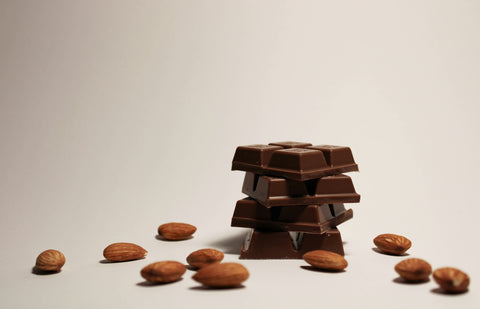When it comes to baking, gifting, or even enjoying a simple chocolate bar, not all chocolates are the same. You’ve probably come across terms like couverture chocolate and compound chocolate, but do you really know what sets them apart? While both are widely used in the culinary world, they differ significantly in ingredients, taste, texture, and usage. For anyone who loves baking at home, crafting desserts, or simply buying chocolates for gifting, understanding these differences is essential. Choosing the right chocolate can dramatically transform the flavor, texture, and presentation of your creations. In this blog, we’ll dive deep into what couverture and compound chocolate really are, how they’re used, their benefits, and most importantly—how you can buy the real chocolate that best suits your needs.
What is Couverture Chocolate?
Couverture chocolate is often referred to as the finest and most authentic type of chocolate available in the market. What makes it special is its high content of cocoa butter (at least 31%) along with cocoa solids. Cocoa butter is the natural fat derived from cocoa beans, and it plays a key role in giving couverture its luxurious qualities. Because of this high cocoa butter percentage, couverture chocolate has a smooth, silky mouthfeel, glossy finish, and a distinct snap when you break it. These qualities are hallmarks of premium chocolate that you typically see in luxury brands or high-end bakeries.
Unlike regular chocolates, couverture is specifically designed for professional use in desserts, confections, and baking. It requires tempering—a process of heating and cooling chocolate to stabilize the cocoa butter crystals. This ensures the chocolate has a shiny finish, doesn’t melt too easily when touched, and maintains its snap. While tempering might sound complicated for beginners, it’s what gives couverture chocolate its professional appeal. When used correctly, it elevates any dessert from ordinary to extraordinary.
Couverture also offers a full-bodied, intense chocolate flavor because it contains more cocoa solids. This is why chocolatiers, pastry chefs, and even serious home bakers prefer it. If you’ve ever tasted a rich praline, a glossy chocolate truffle, or a perfectly finished dessert in a patisserie, chances are it was made using couverture chocolate.
Uses of Couverture Chocolate in Baking
Couverture chocolate is incredibly versatile, but its true beauty comes alive in professional and gourmet desserts.
-
Tempering for Chocolate Bars & Pralines: Couverture is ideal for tempering, which allows chocolatiers to create shiny, crisp chocolate bars and pralines. The end result looks polished, professional, and indulgent.
-
Truffles, Mousses, & Fine Desserts: Because of its rich flavor, it’s the go-to choice for making truffles, mousses, chocolate ganache, and layered desserts. It adds depth and smoothness that compound chocolate simply can’t match.
-
Coating & Enrobing: Professional bakers use couverture to coat cakes, pastries, and even fruits. Its glossy finish makes desserts look luxurious, perfect for special occasions or gift boxes.
-
Luxury Chocolate Making: Premium brands rely on couverture for artisanal chocolates, pralines, and bonbons. It’s what makes them stand out as “fine chocolate.”
In short, if presentation, richness, and a professional-quality finish matter, couverture chocolate is unmatched.
Benefits of Couverture Chocolate
Couverture is considered the “real chocolate,” and for good reason.
-
Superior Taste: Thanks to its high cocoa butter and cocoa solids, couverture has a rich, smooth, melt-in-the-mouth flavor that lingers.
-
Glossy Finish & Crisp Snap: Properly tempered couverture looks shiny and gives that satisfying snap when broken, a sign of high-quality chocolate.
-
Better Texture in Desserts: Desserts made with couverture have a more luxurious, smooth, and creamy texture because of the cocoa butter.
-
Premium Appeal: Couverture is widely recognized as premium, making it the perfect choice for gifting, gourmet desserts, and professional creations.
What is Compound Chocolate?
Compound chocolate, on the other hand, is often seen as a more practical and affordable alternative to couverture. Instead of cocoa butter, it is made using vegetable fats such as palm kernel oil or hydrogenated fats. It still contains cocoa powder for flavor, but the absence of cocoa butter makes a huge difference in texture and taste.
Because it lacks cocoa butter, compound chocolate doesn’t require tempering. It’s much easier to work with—simply melt it, mold it, and let it set. This makes it popular among beginners, home bakers, and mass producers of chocolate products. It’s especially common in budget-friendly desserts, festival gift packs, and candies.
While it doesn’t have the same richness or premium feel as couverture, compound chocolate has its place in the kitchen. It’s stable at room temperature, doesn’t melt as easily, and is highly cost-effective, which is why it’s widely used in large-scale chocolate production.
Uses of Compound Chocolate in Baking
Compound chocolate is used across industries for quick, cost-friendly chocolate applications.
-
Budget-Friendly Desserts: Perfect for homemade brownies, cookies, and everyday desserts where presentation isn’t the priority.
-
No Tempering Needed: Easy to melt and mold, making it suitable for beginners who don’t want to go through tempering.
-
Mass Production: Widely used in commercial candy, biscuits, ice-cream coatings, and confectionery because it’s stable and cheap.
-
Festival Gift Boxes: Due to its affordability and resistance to melting, it’s a popular choice for large-scale gifting during festivals.
Benefits of Compound Chocolate
Compound chocolate may not be “luxury chocolate,” but it has several practical advantages.
-
Cost-Effective & Accessible: Much cheaper than couverture, making it available to everyone.
-
Beginner-Friendly: Doesn’t require tempering—just melt and use.
-
Room-Temperature Stable: Less prone to melting, especially in warm climates.
-
Perfect for Scale: Ideal for mass production, gift hampers, and budget-conscious baking.
Couverture vs Compound Chocolate: A Comparison
|
Feature |
Couverture Chocolate |
Compound Chocolate |
|
Cocoa Butter Content |
High (31% or more) |
Replaced with vegetable fat |
|
Flavor & Texture |
Rich, smooth, premium |
Mild, less intense |
|
Tempering |
Required |
Not required |
|
Shine & Snap |
Glossy, crisp |
Dull, softer |
|
Usage |
Gourmet desserts, truffles, bars |
Budget baking, coatings, mass use |
|
Cost |
Higher (premium) |
Lower (affordable) |
This side-by-side comparison makes it clear why couverture is considered premium while compound is often chosen for convenience and cost savings.
How to Buy the Real Chocolate
With so many options in the market, buying “real” chocolate can feel overwhelming. Here are some practical tips to guide you:
-
Check the Ingredients: Look for cocoa butter and cocoa solids if you want authentic couverture. If the label lists vegetable fats, it’s compound.
-
Look at Cocoa Percentage: Higher cocoa content means richer flavor. For couverture, ensure at least 31% cocoa butter.
-
Match with Your Purpose: For professional baking or premium gifts, go for couverture. For quick desserts or budget-friendly baking, compound works just fine.
-
Brand & Packaging: Reputable brands clearly label couverture as “Couverture Chocolate.” Compound is often marketed as “cooking chocolate” or “coating chocolate.”
-
Use Price as a Clue: If the chocolate is too cheap, it’s likely compound. Real couverture is more expensive due to cocoa butter.
By keeping these points in mind, you can confidently choose the right type of chocolate for your baking and gifting needs.
Conclusion
Choosing the right chocolate can make all the difference in your desserts, gifts, and baking creations. Couverture chocolate offers indulgent richness, smooth texture, and a luxurious finish, making it perfect for gourmet desserts and professional baking. On the other hand, compound chocolate is cost-effective, stable, and easy to use, making it a practical choice for everyday baking, mass production, and festivals.
By understanding the key differences, checking labels, and matching chocolate with your purpose, you can ensure that every chocolate experience is just as you want—whether that’s decadent and indulgent or simple and practical. Next time you’re shopping for chocolate, whether for baking or curating a thoughtful chocolate gift box, make a conscious choice, and savor the real taste of quality.




